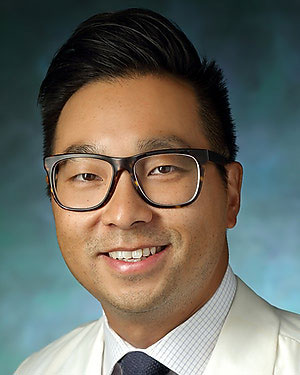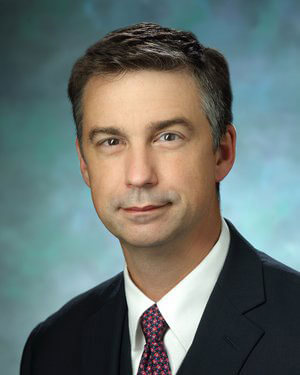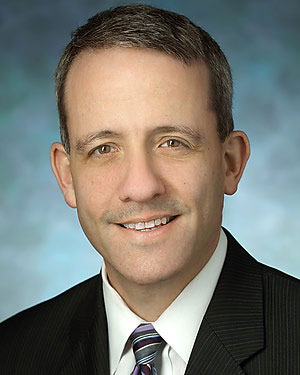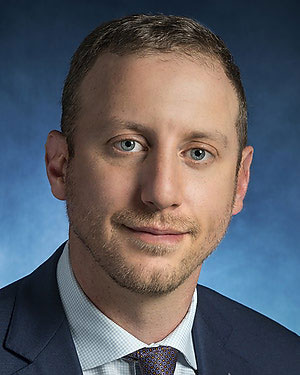Reconstructive surgery can change lives by restoring your appearance, functionality, and mobility. For some, reconstructive surgery can give you back a part of your life or provide something you never thought you would have.
Why Choose Johns Hopkins for Reconstructive Plastic Surgery?
Surgical Expertise
Compassionate Care
Advanced Research
Multidisciplinary Approach
Request An Appointment
Schedule Online Through MyChart
Available for new and follow-up appointments with most providers.
Log into MyChart | Sign up for MyChart
Schedule by Phone

International patients can request an appointment though international patient services.
Surgery for Bedsores (Pressure Sores)
-
Bedsores, sometimes called pressure sores or decubitus ulcers, can develop in people who have been confined to bed for long periods of time, are unable to move for short periods of time, or who use a wheelchair or sit in one spot for long periods of time. Other complications, such as aging, circulation and decreased sensation, can increase the likelihood that a person will develop pressure sores. Hospital patients and nursing home residents, as well as those who are being cared for at home and who are confined to bed are most at risk to develop pressure sores.
-
 Julie Ann Caffrey, D.O., M.S.
Julie Ann Caffrey, D.O., M.S.
Burn Fellowship Program Director
Associate Professor of Plastic and Reconstructive Surgery
Associate Professor of Surgery
 Richard James Redett, III, M.D.
Richard James Redett, III, M.D.
Director, Plastic and Reconstructive Surgery
Director, Cleft Lip and Palate Center
Director, Genitourinary Transplant Program
Professor of Plastic and Reconstructive Surgery
Professor of Pediatrics
 Robin Yang, D.D.S., M.D.
Robin Yang, D.D.S., M.D.
Director of Pediatric Plastic Surgery
Division Chief of Oral and Maxillofacial Surgery and Dentistry
Assistant Professor of Plastic and Reconstructive Surgery
Assistant Professor of Otolaryngology - Head and Neck Surgery -
Skin Cancer Reconstruction
-
If you are diagnosed with a type of skin cancer, your doctor may recommend surgery as the best option for removing the cancer and preventing its spread. Depending on the type of skin cancer and how much skin and tissue around the cancer needs to be removed, your doctor may recommend reconstructive surgery to replace the skin and tissue and to minimize scarring.
This may include Mohs surgery, which is known as the most effective treatment for most types of skin cancer. This procedure removes the cancerous tissue and minimizes the loss of healthy tissue.
-
 Damon Sean Cooney, M.D., Ph.D.
Damon Sean Cooney, M.D., Ph.D.
Clinical Director, Face Transplant Program, Johns Hopkins Comprehensive Transplant Center
Clinical Co-Director, Penile Transplantation, Johns Hopkins Comprehensive Transplant Center
Assistant Professor of Plastic and Reconstructive Surgery Scott David Lifchez, M.D.
Scott David Lifchez, M.D.
Director, Plastic Surgery and Hand Surgery Service, Johns Hopkins Bayview Medical Center
Chief, Plastic Surgery at Johns Hopkins Bayview Medical Center
Program Director, Johns Hopkins/University of Maryland Plastic Surgery Residency
Associate Professor of Plastic and Reconstructive Surgery
Associate Professor of Orthopaedic Surgery Michele Ann Manahan, M.D.
Michele Ann Manahan, M.D.
Department Vice Chair for Faculty and Staff Development and Well-Being and Past Department Director of Patient Safety
Professor of Plastic and Reconstructive Surgery Sami Hani Tuffaha, M.D.
Sami Hani Tuffaha, M.D.
Assistant Professor of Plastic and Reconstructive Surgery Robin Yang, D.D.S., M.D.
Robin Yang, D.D.S., M.D.
Director of Pediatric Plastic Surgery
Division Chief of Oral and Maxillofacial Surgery and Dentistry
Assistant Professor of Plastic and Reconstructive Surgery
Assistant Professor of Otolaryngology - Head and Neck Surger -
Tissue Transplant
-
Tissue transfers (from one part of the patient’s body to another, also known as “flaps”) and tissue transplants (from a deceased donor) provide a means for reconstructive surgeons to repair parts of the body, restoring appearance and in many cases function and feeling. The most common reasons for patients to undergo tissue transfer or transplant is after treatment for cancer or after trauma, burn or injury.
In tissue transfer, the plastic surgeon removes tissue, including skin, fat, muscle, nerves and bone, from one part of the body and moves it to the part of the body where it is needed. The arteries and veins are re-attached and, in some cases, the nerves are as well. One of the most well-known types of tissue transfer is used in breast reconstruction for women who have had a mastectomy as part of their treatment for breast cancer. Another common type of tissue transfer is done for patients who have been severely burned or have significant tissue damage from devastating injuries or accidents.
-
Our plastic surgeons have performed thousands of tissue transfers, including hand, arm, penis and face transplants, offering patients new opportunities and hope for the future. They have learned about and, in many cases, taught the latest and most effective surgical techniques. In addition, because they work at Johns Hopkins, they can call on any other kind of medical expertise needed right at the facility, from orthopedists and oncologists to pediatricians and dermatologists. Our reconstructive surgeons are devoted to their profession and that includes consultation with the patients, their families, and others as needed. From the first consultation to the final check-up, they make themselves available and accessible to patients.
Specialty Center
At Johns Hopkins, we treat hand and arm injuries and defects with the newest and most innovative technologies and procedures. The Center for Amputation and Limb Loss offers comprehensive care with a multidiscplinary medical team including in plastic and reconstructive surgeons, trauma and critical care surgeons, orthepedic surgeons, physical medicine and rehabilitation specialists, as well as engineers and dedicated researchers.
Tissue Transfer Treatment Options
There are four kinds of tissue transfer:- Local flaps are an exact match to tissue and the shape of the space it’s being used for, such as the face.
- Regional flaps are comprised of tissues taken from a nearby area and are often used to re-build large areas of vital structures including bone and nerves.
- A free flap, or free tissue transfer, involves the removal of tissue from an entirely different part of the body. This procedure requires optimal blood supply and advanced microvascular surgery.
- Tissue transplants can be done for a range of conditions and injuries, including corneal transplants to restore sight and heart valves to repair damage done by heart disease. In reconstructive surgery, tissue transplants are used to:
- Repair bones and soft musculoskeletal tissue, such as ligaments
- Replace skin destroyed by burns
-
-
